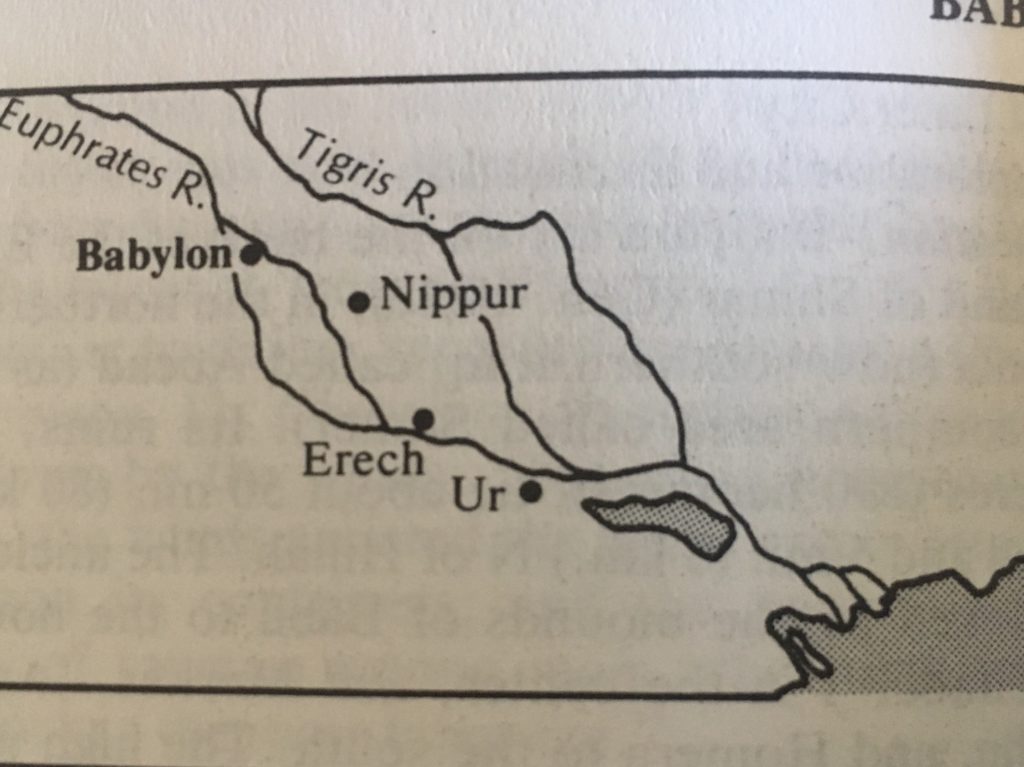If Chapter 10 is one of those chapters that makes the Bible boring to the untrained eye, Chapter 11 makes the Bible exciting to all those willing to connect a few dots.
What does history tell us?
In terms of human history a dramatic turn is taking place.
After the flood, the earth’s population grew fast, and humans decided to live differently. For the first time in history, people gathered together and formed cities. Urbanizing delivered a few surprising advantages, at this time humans still lived way past 100 years in great health. Humans, living side by side with their neighbors began to leverage knowledge, working together, they birthed a technological revolution. Their list of accomplishments is long and impressive, starting with the wheel, includes amazing farming and building techniques, ending with prolific writing.
For the sake of brevity, that’s all I will write about their tech industry.
God Had A Plan
Until now, Bible history was recorded in brief, but from now on, with the the help of Sumerian training and influence, God’s people will not only write their history in greater detail, but learn to make exact copies of the text, arguably the greatest gift in all human history.
At this time humans had a great advantage, an advantage they chose to use for evil, “The whole earth had one language and the same words.” The rebellion began when humans chose to not scatter, as God had commanded them to scatter over the face of the earth and repopulate it. Fear was now in man, and he clung tightly to his fellow man, and not God.
A Clue
The phrase “the people migrated from the east,” is actually a clue as to the landing spot of Noah’s Ark. Noah’s Ark rested in the rugged moutain regions just above modern Iran. Arat is an uncertain location, and by no means is in modern day Turkey.
Babel And Babylon
The region known as Shinar will become Babylon. Not mentioned in the text but of great importance are the Sumerians. There is no certainty as to the precise location of the first cities belonging to Babylon, Shinar or Sumer, but they all resided about a days walk from each other, and were led by a nasty warlord named Nimrod (Chapter 10:10).
Thanks to Nimrod, the entire region slides quickly into false religion. The Sumerians became well known idolaters, building large and high towers, mainly for the purposes of lewd and sexual religious practices.
The Tower
The text mentions a tower will be built, and it will be known as the Tower of Babel. The exact description of brick building is 100% consistent with historical research. For example the text mentions bitumen and not tar. If the text had mentioned tar we would know the text was not ancient, tar is a black liquid that comes from sophisticated distillation process found only in the modern era. Bitumen is a fantastic organic binding agent, still used in this day, for roads and some building materials. Bitumen comes from fields soaking in high grade crude, when removed and applied, especially to stone or brick, create a remarkably firm waterproof glue. To this day, the region is soaking in high grade crude.
Most stunning, is a precise description of the Tower of Babel, drawn on a large stone tablet, preserved until now in a private collection. The Smithsonian was given the privilege of recording the finding, and it shows King Nebuchanazzer, thousands of years later, rebuilding the Tower of Babel.
God was not pleased with the silliness and rebellion of humans, so instead of sending another flood, he chose to slow humans down in order to avoid further disaster. The text gives the outright defintion of Bab-El. “Therefore its name was called Babel, because there the Lord confused the language of the earth.”
From this point on, the region will be known as Babylon, and the name Babylon will always be assoicated with rebellion against God. The name Babylon will not leave the pages of the Bible until Revelation 18, when it is said, “Babylon will be found no more.”

General Idea Of Locations

Click Here For Genesis Chapter 12





